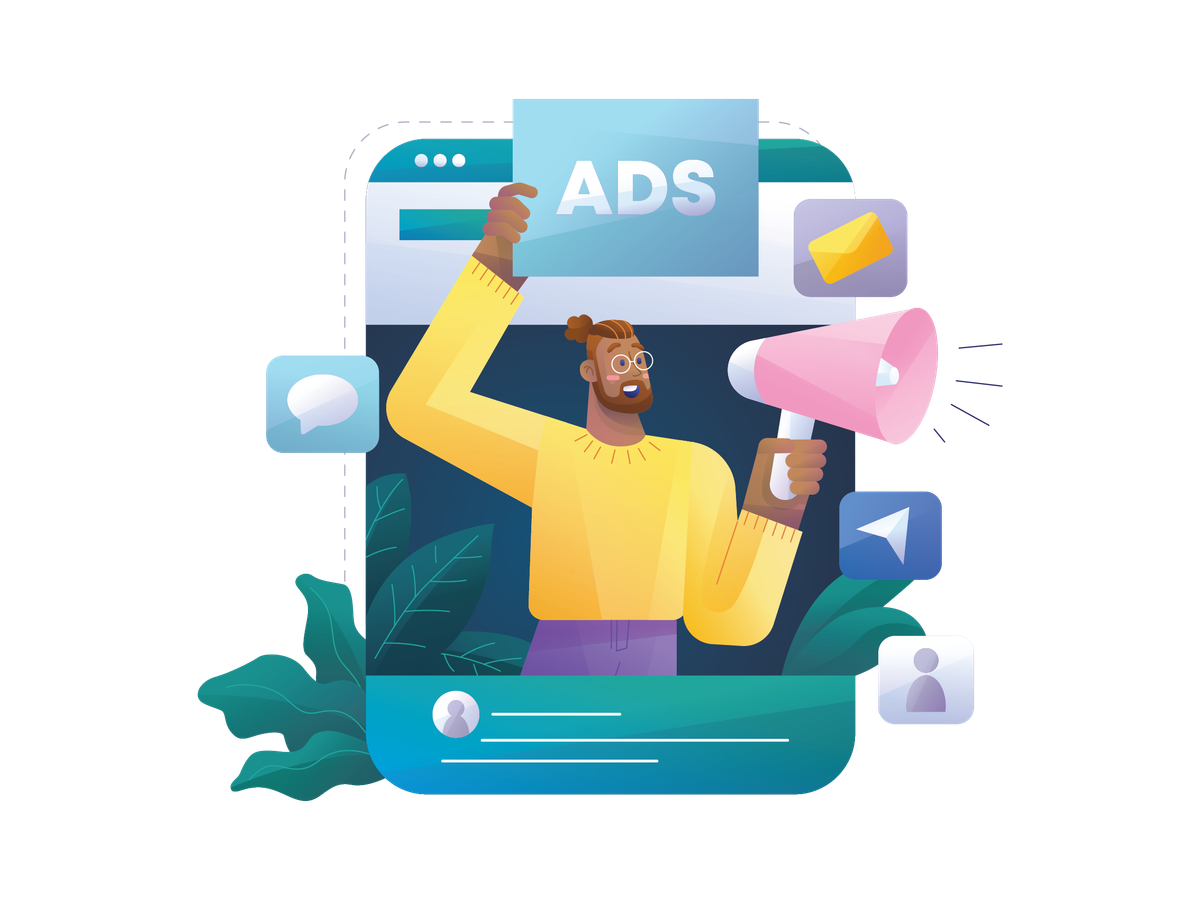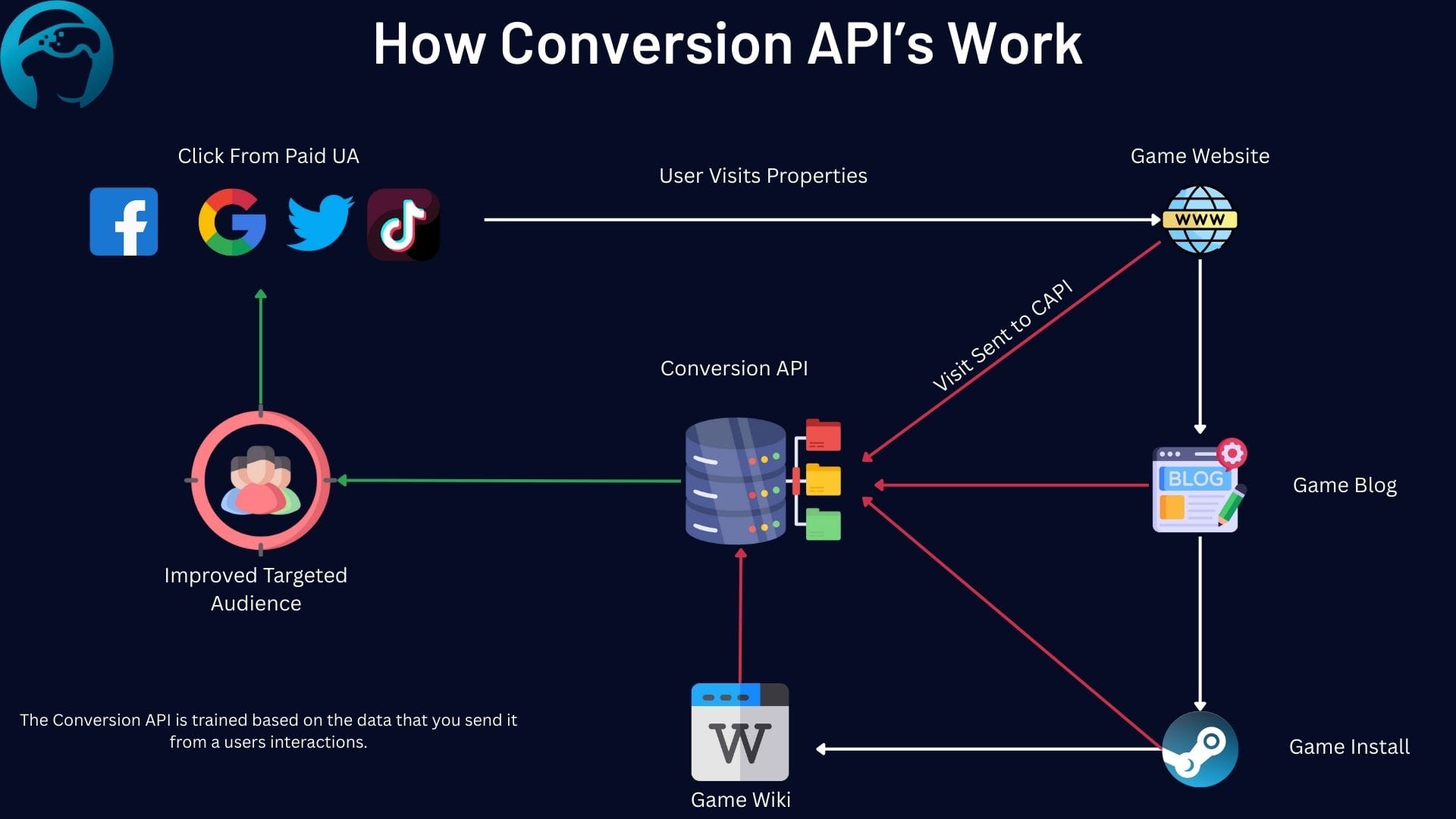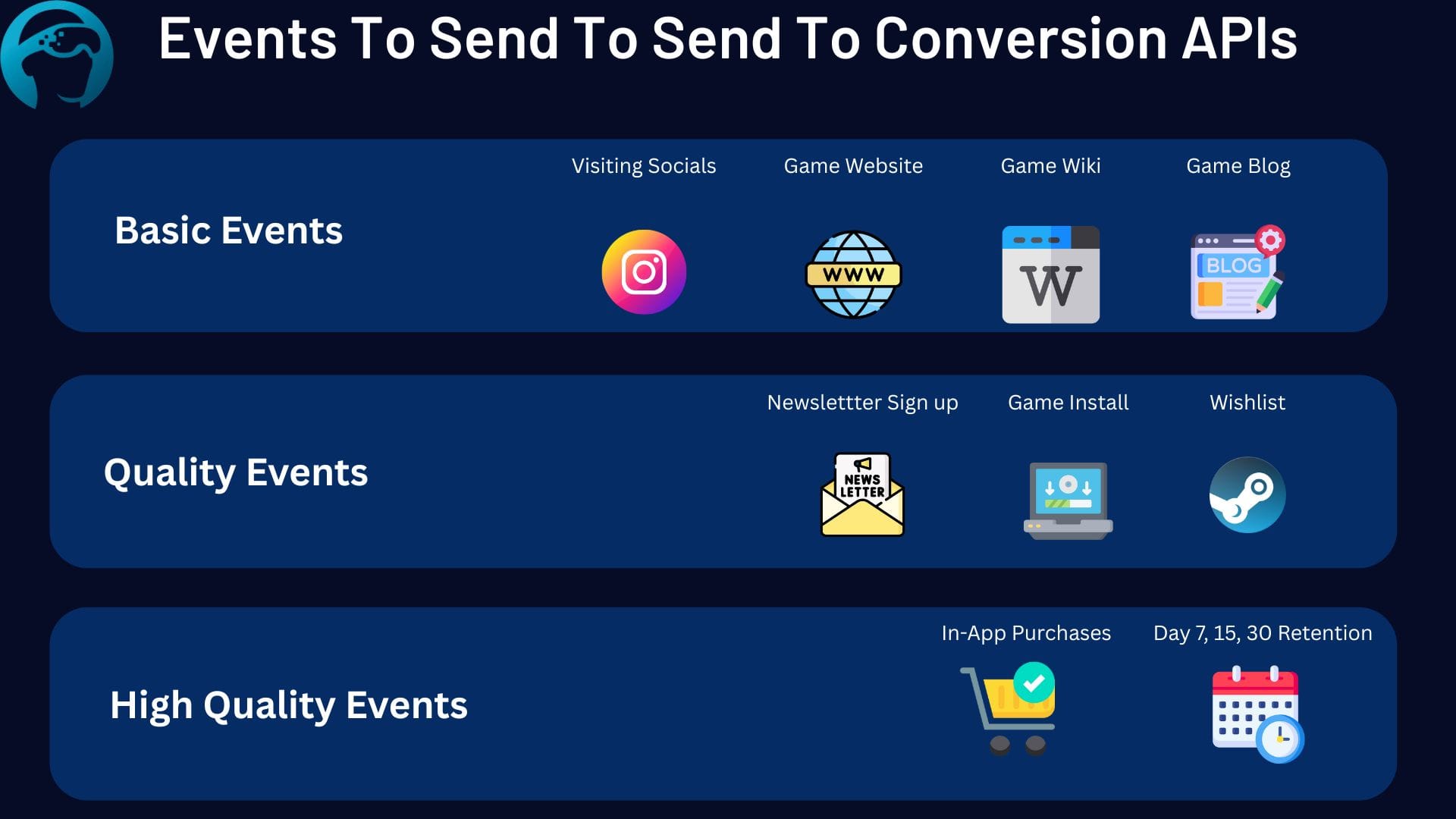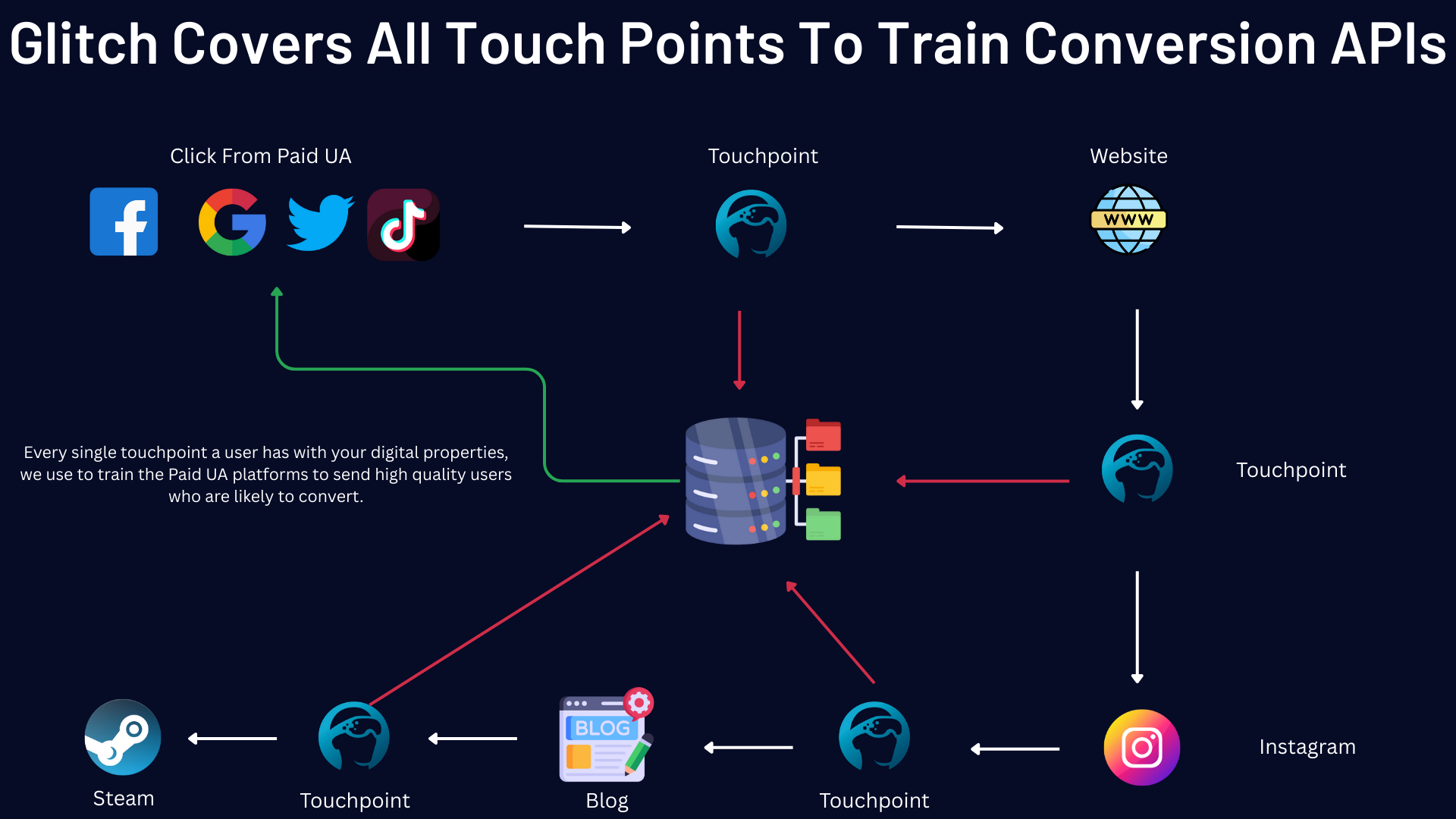How To Lower Your Game's Advertising Costs with Conversion APIs

One of the major frustrations about advertising I see when talking to developers is it feels like a black box and the house (aka ad platform) always wins. They paid a lot of money for almost no results. We've worked with other games that have gotten their cost per conversion down to a staggering $0.36.
One of the things I see that is overlooked a lot when advertising to achieve really low costs is utilizing a simple and powerful tool: the conversion API. Almost every ad platform has this powerful but underutilized and misunderstood tool—the conversion API.
In this article, we are going to cover the importance of the conversion API and how to use it to optimize your game's advertising spend. The bottom line key performance indicator will be your Return On Advertising Spend (ROAS) for short. The 3 areas we are going to cover with the conversion APIs are:
- What is a Conversion API
- Events to train the API
- Retargeting
- Lookalike Audience
What Is A Conversion API and Why Use It
A conversion API (CAPI for short) is an API that you send data back to help train it. Training is important because it helps the ad platform send you the right people. When you initially set up an ad, you will enter targeting information such as gender, age, location, interests and other information, and the ad platform starts to deliver those results.
Now of course the majority of people won't convert at first. To help the API send more of the right people, you have to send data back to it. It will take your target information and further narrow it down to send more people like the ones that convert.

Almost every ad platform has a CAPI—they're all different but follow the same concepts. If you want to read more about each one, check the links below:
What Kind Of Events Can You Send To The CAPI
As you want to get more advanced, there are different kinds of events you can send to the conversion API beyond just the conversion. Now each CAPI has its own set of events that it uses.
For example:
- Facebook: AddPaymentInfo, AddToCart, AddToWishlist, CompleteRegistration, Contact, CustomizeProduct, Donate, FindLocation, InitiateCheckout, Lead, Purchase, Schedule, Search, StartTrial, SubmitApplication, Subscribe, ViewContent
- Reddit: Page Visit, View Content, Search, Add To Cart, Add To Wishlist, Purchase, Lead

All of those are standard events the specific API has built in. But you can add your own custom events as well. Now here is where we can start to get a little bit advanced with the API. Sending events like PageVisit are good for retargeting (we will cover that later), but installs are always the main metric to focus on, especially for Free To Play Games.
Training the CAPI
These events allow you to train the CAPI by sending it data for every person that installs the game—it will show your ad to more people who are likely to install. A step further is targeting people that are likely to retain. In turn, the ad platform will then start to send you more people that exhibit the actions that you're sending back.
For Free2Play Games, in marketing we do something called Whale Hunting, where a tiny percentage of the users make up the vast majority of revenue. We care about acquiring those users, so we can train the CAPI not just on the install but with Custom Events on how long the user retains for (Day 7, Day 15, etc). This is how you can improve your ROAS.
Re-Targeting
Another important function the CAPI helps with is re-targeting. Notice that all CAPIs have the standard events for viewing content. When advertising, a person might be interested in the product but not ready to purchase. So people do their research.
They look at the reviews of user players, visit the website, check out their social media, read the wiki and everything else about the game. Side note: we've built wikis for games and found that people spend an average of 9 minutes and 40 seconds on a wiki. So to help your game's chances of conversions, it can be beneficial to put together content around your game so people can research and influence their purchase decision.
As they are researching it, this data can be sent back to the CAPI, which then lets it know to retarget a user that has shown interest but has not yet made a conversion.
Lookalike Audience
And the final concept we are going to explore is lookalike audiences created from CAPIs. When you first created your campaign, you created an audience you thought was right, and the ads started serving. If you have been sending data back to the CAPI, you've trained it on people who actually like your game.
This can become your lookalike audience—it describes people that have actually engaged with your game on a deeper level, i.e., converted. You can apply the Lookalike to new ad sets to target more of these kinds of players for your game.
Server to Server CAPI Communication
In order to train the CAPI, you have to send data back to it. At a high level, we call this a pixel. But how the pixel actually works underneath the hood is through server-to-server communication where your server has to send data back to the CAPI.
Here is how it works:
- A user clicks the ad to go to a landing page. Every click will have a tracking ID attached to it as a query parameter, or what is known as the pixel. For example, Google uses gclid.
- If you own the website that the user is being directed to, you can capture this ID. Or for ad platforms, you may use a tracking link on the ad click to capture this information.
- You associate the pixel with a user, i.e., a cookie, and when a user does certain actions, you send this information back to the CAPI.
- Conversion APIs are typically RESTful APIs that you pass this data back to after learning their routes and parameters.
Sounds simple enough until you get into cross-device tracking. Meaning a user sees your ad, goes to the website, purchases the game, installs it—how do you know it was that user who installed to train the CAPI for more advanced events?
If you have a web game, this is very easy—your web game can access the pixel or cookies information in the browser. But if it's a game on a mobile device like Android or on Steam, this is where you want to use advanced techniques like fingerprinting.
Fingerprinting is a probabilistic matching that seeks to match a user based on properties that make it seem like this will be the same user. From fingerprinting, you can send information that a user is actually playing your game and retaining back to the CAPI. This is extremely powerful for having the ad platform send you more of those kinds of users.
Using Glitch to Communicate With The CAPI

Taking the time to learn a conversion API can be out of scope for what you need to learn for advertising your game, as implementing the technical requirements can be time consuming. At Glitch, we make all of these seamless with minimal technical requirements. We offer:
- Tracking links to track user actions across properties that can automatically be sent back to conversion APIs
- Fingerprinting from the game that can track installs and send those installs back to the API
- Legal requirements to help you stay compliant with local laws when tracking
One of the important areas that you will have to look into when utilizing conversion tracking is: are you in compliance with laws of a region or country that allow user tracking? These laws may or may not require a user to give consent to track—all of that is covered in this article. Glitch will help you correctly navigate these legal requirements.
Wrap Up
Utilizing conversion APIs are critical for improving your return on advertising investment (ROAS). The difference between developers who struggle with advertising costs and those who achieve remarkable results like $0.36 cost per conversion often comes down to one thing: properly implementing and leveraging conversion APIs.
Remember, advertising doesn't have to feel like a black box where the house always wins. By sending the right data back to train these APIs, you're essentially teaching the ad platforms exactly who your ideal players are. This creates a virtuous cycle where your ads get smarter over time, your targeting gets more precise, and your costs go down while your conversions go up.
The four key strategies we've covered—understanding what CAPIs are, training them with the right events, using them for retargeting, and creating lookalike audiences—work together to transform your advertising from a cost center into a profitable growth engine. Whether you're hunting whales in a Free2Play game or trying to acquire users who will stick around for the long haul, conversion APIs give you the tools to find and target exactly the right people.
Don't let the technical complexity intimidate you. While implementing server-to-server communication and cross-device tracking can seem daunting, solutions like Glitch make it possible to harness this power without becoming a conversion API expert yourself. The key is getting started and iterating—every piece of data you send back makes your advertising more effective.
Your game deserves players who will love it, and conversion APIs are your best tool for finding them efficiently and cost-effectively. The platforms want to send you converting users just as much as you want to receive them—you just need to give them the data to make it happen.




